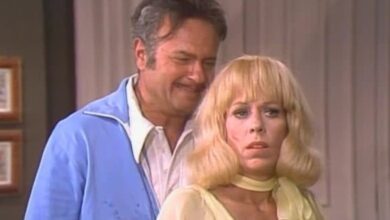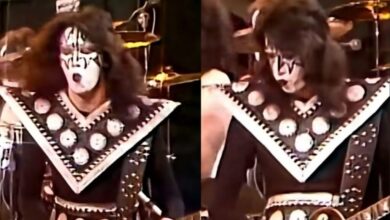Marvin Gaye’s ‘What’s Going On’ Redefines Protest Music and Soulful Storytelling in 1971
When Marvin Gaye released “What’s Going On” in early 1971, he wasn’t just unveiling a song—he was baring his soul and cracking open a national conversation. The track, with its haunting question and pleading tone, diverged from the romantic ballads and slick Motown production that had defined Gaye’s career to that point. It was revolutionary, not just for its lyrical content, but for the emotional urgency with which it was delivered. “What’s Going On” reached No. 2 on the Billboard Hot 100 and No. 1 on the R&B chart, but its true success was deeper: it created space for soul music to be politically conscious, poetic, and deeply personal all at once.
Marvin Gaye, born in Washington, D.C., had grown up under the strict hand of a Pentecostal minister father, singing in church choirs before rising to prominence at Motown in the 1960s. Known for his silky tenor and suave persona, Gaye had racked up hits like “How Sweet It Is (To Be Loved by You)” and duets with Tammi Terrell that showcased a tender romanticism. But behind the scenes, Gaye was grappling with personal demons: grief, addiction, and a growing dissatisfaction with the pop image Motown had constructed for him. The late ’60s, with its assassinations, racial violence, and the Vietnam War, affected Gaye deeply, stirring a need to speak through his art more directly.
The inspiration for “What’s Going On” came from Renaldo “Obie” Benson of the Four Tops, who witnessed a police confrontation with anti-war protesters in Berkeley. Troubled by what he saw, he began writing a song about the experience but found little support from his bandmates. He brought the idea to Gaye, who immediately connected with its message. Gaye rewrote the lyrics, infused them with spiritual yearning and social commentary, and reshaped it into something more than protest—it became a prayer for understanding. He saw the song not just as a political statement, but as an expression of love and concern for humanity.
Recording began in June 1970 at Motown’s Hitsville U.S.A. studio in Detroit. Gaye co-produced the track himself—an unusual move at the time—alongside David Van DePitte, who arranged the orchestration. The recording featured members of the legendary Funk Brothers, including James Jamerson on bass. Gaye layered his own vocals multiple times, creating an overlapping, conversational sound that felt both intimate and communal. The saxophone intro by Eli Fountain, captured off a spontaneous warm-up, became one of the song’s most iconic moments. Every element was crafted with intention, from the congas to the lush strings, creating a rich tapestry of jazz, soul, and classical influences.
Motown founder Berry Gordy initially refused to release the song, fearing its political overtones would alienate fans and harm Gaye’s image. But Gaye stood firm. In a rare act of defiance, he refused to record anything else until the song was issued. Motown relented, and the single was released in January 1971. It sold over 100,000 copies in its first week and quickly became one of the label’s fastest-selling tracks ever. Critics praised its depth, beauty, and courage. “What’s Going On” wasn’t just a hit—it was a cultural awakening, opening the door for Gaye to record the full concept album of the same name later that year.
The song resonated in a divided America grappling with war abroad and unrest at home. It gave voice to the anguish of soldiers returning from Vietnam, the sorrow of mothers who had lost their sons, and the confusion of a generation caught between peace and protest. With its plaintive question—“Mother, mother, there’s too many of you crying”—Gaye struck a nerve that cut across race, class, and age. This wasn’t protest music that screamed; it wept. It didn’t condemn—it pleaded.
“What’s Going On” transformed Gaye from a hitmaker into an artist of profound depth. The success of the single gave him unprecedented creative control at Motown, allowing him to produce What’s Going On, a cohesive, socially conscious album that remains one of the most revered in music history. It launched Gaye into a new phase of his career, one marked by innovation and introspection, from the sensual Let’s Get It On to the contemplative I Want You.
The influence of the song spread far beyond Motown. Artists like Stevie Wonder, Curtis Mayfield, and even Bob Dylan took cues from Gaye’s new direction. It helped birth a genre often referred to as “conscious soul,” where melody and message could exist in harmony. In the decades that followed, artists such as Lauryn Hill, D’Angelo, and Kendrick Lamar would cite Gaye’s work—and this song in particular—as a foundational influence.
Many artists have covered “What’s Going On,” but few have captured its original mix of grace and urgency. Donny Hathaway performed a stirring live version, while Cyndi Lauper, Ben Harper, and even A Perfect Circle brought the song into new sonic territories. Yet it is always Marvin’s voice, layered and aching, that defines the song’s essence.
In 1971, Gaye was also mourning the death of his singing partner Tammi Terrell, whose passing from a brain tumor had devastated him. That grief, coupled with the chaos of the world around him, fueled a spiritual and emotional transformation. “What’s Going On” was his catharsis—and it allowed listeners a place for their own.
The song has endured as a permanent fixture on classic radio and in the American songbook. It has topped numerous lists, including Rolling Stone’s 2021 ranking of the 500 Greatest Songs of All Time, where it was named No. 1. Its message remains achingly relevant, often resurging during times of national crisis or protest, proving that its questions are still waiting for answers.
In terms of musical innovation, Gaye’s production techniques—especially the use of vocal layering and orchestral jazz fusion—set a new standard for soul music. His approach anticipated the concept of the “singer-songwriter-producer” as we know it today, carving a path for artists to control both the message and the medium.
Though Marvin Gaye was tragically killed in 1984, the legacy of “What’s Going On” has only grown. The song has been inducted into the Grammy Hall of Fame, preserved in the National Recording Registry, and used in countless documentaries, films, and public service announcements. Each generation finds new meaning in its words.
“What’s Going On” is more than a protest song—it is a soulful meditation on the human condition. In its vulnerability lies its power. It opened doors, softened hearts, and changed the course of Black music forever. More than five decades later, its plea still echoes. And perhaps that is its greatest truth: that asking the question may matter just as much as finding the answer.





